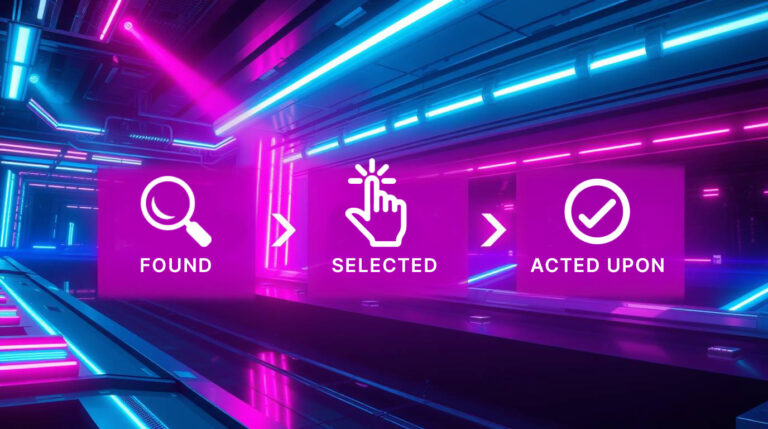Why beautiful websites fail without conversion focused design
Let me tell you a story we see far more often than we should.
A business comes to us with a website that looks fantastic. Beautiful colours. Smooth animations that make you go “nice”. Every pixel in the right place.
Except for one thing. It does not convert.
No leads. No enquiries. No movement in the pipeline.
And despite the aesthetics, the owner knows something is not working. They can feel it. People visit, but they do not take action. The site looks good, but it is not doing its job.
We hear it all the time.
“Something is wrong.”
And they are right. Something is.
It usually takes us about five seconds to spot the real issue. The website is designed to impress, not designed to inform, build trust, or guide a user to make a decision.
In other words, the site looks good but has no conversion focused website design behind it.
And that, right there, is the difference between a website that exists and a website that earns its keep.
Most websites are built for the wrong audience
Here is the truth most business owners do not want to hear.
Most websites are built to please the business owner, not the customer.
We focus on how it looks instead of how it leads.
We obsess over fonts instead of flow.
We prioritise the brand story instead of the customer problem.
If your website opens with a poetic headline that says nothing, followed by a paragraph about how long you have been in business, finished with a vague “Learn More” button, your customer is lost before they have even begun.
Your audience is not hunting for your backstory. They are hunting for a solution to their problem.
Good design supports that.
Conversion focused website design is built around it.
Websites are often built backwards
Here is the pattern we see again and again.
Most websites are built in this order:
- Start with aesthetics
- Add branding
- Fill in pages
- Drop in generic copy
- Add a “Learn More” button
- Hope for conversions
This is website building in reverse.
A high performing website needs to be built in the exact opposite order. The website conversion strategy should lead, and design should support it.
Because when the build starts with the wrong priorities, you end up with familiar issues like:
- Headlines that sound clever but tell you nothing
- Walls of copy that talk about the business, not the visitor
- Calls to action that are vague or passive
- Navigation that assumes users know what they want
- Pages with no clear next step
- Layouts that look pretty but fight against the user journey
Your website is not a gallery piece. It is a tool. And tools need a purpose.
Why your homepage is not working as hard as it should
Your homepage is your most powerful real estate. It is where your brand makes its first impression, where visitors decide if they trust you, and where action either begins or dies.
If that first section above the fold does not communicate your value clearly, you lose people before they even start scrolling. That is why this area plays a massive role in your website conversion strategy.
Here is what belongs there:
1. A clear headline that says what you do and who you help
This is not the place for poetry. It is not the place for vague statements like
“We create innovative solutions for tomorrow.”
A great headline tells people:
- what you do
- who you help
- what problem you solve
And ideally, why it matters.
Clarity beats cleverness every day of the week.
2. Instant social proof
Humans trust what other humans trust. A single line of proof can change how someone sees your brand.
This could be:
- Google review summary
- Years in business
- A client roster
- A quick testimonial
- A “trusted by” bar
Proof increases confidence and confidence drives conversions.
3. A call to action that is specific and meaningful
If your CTA says “Learn More”, you are giving visitors a chance to leave. If your CTA is passive or generic, people will assume the next step is not important.
Great CTAs tell users what to do next and why it benefits them.
Examples:
- Book a consultation
- Get a quote
- Download the guide
- Start your project
You are not being pushy. You are being helpful.
Why website conversion strategy matters more than ever
The digital landscape is noisy. People are busy, distracted, and flooded with content. They take seconds to decide if a website is for them.
Without strategy, your website becomes one of the many they close.
With strategy, your website becomes a guide. It takes users on a journey. It gives the right information at the right time in the right order. It builds trust, reduces friction, and helps people take action with confidence.
This is the heart of website conversion strategy, and it works.
What happens when you prioritise conversion over aesthetics
This is where the magic happens. When strategy leads, performance follows.
Here are some real examples from Redfox clients:
- One client went from months without a single enquiry to receiving a qualified lead within twenty four hours of launch.
- Another booked multiple calls in the first week.
- A third saw a major increase in local search conversions simply by clarifying their services and adding structured calls to action.
Nothing else changed. Not their price, not their offer, not their industry.
Just the strategy behind the design.
Your website is only as strong as the thinking behind it
A website can only convert when:
- your customer understands what you do
- they feel confident in your authority
- they know what to do next
- the path is clear and friction free
- the content aligns with their goals
- the design supports the journey
If one of those pieces is missing, conversion drops.
If several are missing, conversion disappears completely.
This is why websites built without strategy fail most often. They never had the structure they needed to perform.
What to audit on your own website
If you want a quick sense of how your site is performing as a conversion tool, ask yourself these questions.
1. Would a new user understand what we do in five seconds?
2. Is our call to action clear?
3. Does our content speak to the customer or about ourselves?
4. Is the next step obvious on every page?
5. Does our design support our strategy?
6. Do we have a website conversion strategy at all?
These questions alone will reveal more than most analytics dashboards.
Strategy and design are not opposites. They are partners.
None of this is an argument against beautiful design.
We love beautiful design. We create beautiful design.
But design only becomes powerful when it has purpose behind it.
Strategy is the blueprint.
Design is the execution.
Together, they create outcomes.
That is the Redfox way. We build websites that look good, feel good, and convert. Not because they are pretty, but because they are intentional.
Ready to find the blind spots?
If your website looks great but is not delivering leads, it is not a design problem. It is a strategy problem.
And that is exactly what we can help you fix.
If you want clarity, direction, and a website that actually drives business, let’s chat. We can walk you through an audit, show you what is holding you back, and help you build the foundations for long term digital performance.
Your website should not just be seen.
It should work.


